Design details
The CZ 110 is a recoil-operated, locked-breech semi-automatic pistol that features a short-recoiling barrel that locks to the slide with a single massive lug which engages the ejection port cut-out when locked. To unlock, the barrel is cammed down by the interaction of the shaped cam on the barrel and the angular camming guide in the frame.
Recoil operation is an operating mechanism used to implement locked-breech, autoloading firearms. Recoil operated firearms use the energy of recoil to cycle the action.
The frame of CZ 110 is made from an impact-resistant polymer while the slide is made from steel, which was ČZ's entry into the polymer-frame pistol market.
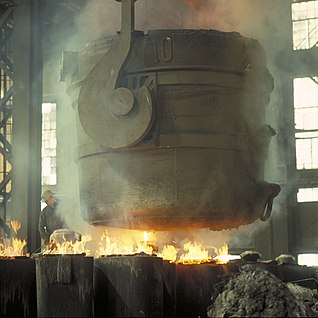
Steel is an alloy of iron and carbon, and sometimes other elements. Because of its high tensile strength and low cost, it is a major component used in buildings, infrastructure, tools, ships, automobiles, machines, appliances, and weapons.
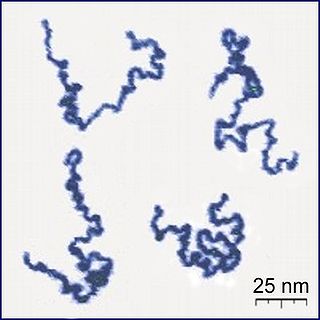
A polymer is a large molecule, or macromolecule, composed of many repeated subunits. Due to their broad range of properties, both synthetic and natural polymers play essential and ubiquitous roles in everyday life. Polymers range from familiar synthetic plastics such as polystyrene to natural biopolymers such as DNA and proteins that are fundamental to biological structure and function. Polymers, both natural and synthetic, are created via polymerization of many small molecules, known as monomers. Their consequently large molecular mass relative to small molecule compounds produces unique physical properties, including toughness, viscoelasticity, and a tendency to form glasses and semicrystalline structures rather than crystals. The terms polymer and resin are often synonymous with plastic.
The CZ 110 is a striker-fired pistol; the firing pin (striker) can be fully cocked by the slide retraction cycle and then, if immediate fire is not required, can be brought down to rest by the decocking lever. The only other safeties is a firing pin block and a loaded chamber indicator. The CZ 110 also features an accessory rail for attaching a laser or light.

The Picatinny rail, or Pic rail for short, also known as a MIL-STD-1913 rail or STANAG 2324 rail, is a military standard rail interface system that provides a mounting platform for firearm accessories. It was originally used for mounting scopes atop the receivers of larger caliber rifles. Once established, its use expanded to also attaching other accessories, such as: iron sights, tactical lights, laser aiming modules, night vision devices, reflex sights, foregrips, bipods, slings and bayonets.

A tactical light is a flashlight used in conjunction with a firearm to aid low-light target identification, allowing the marksman, law enforcement officer or soldier to simultaneously aim a weapon and illuminate the target. Tactical lights can be handheld or mounted to the weapon with the light beam parallel to the bore. Tactical lights also serve a role as a method of non-lethal force, used to temporarily blind and disorient targets or, in the case of a large metal Maglite with D batteries, police can use the flashlight as a billy club. Features particularly associated with tactical lights include shock resistance, reliability, lightweight construction and powerful, long-lasting batteries, and high light intensity. Tactical lights may have optional filters to produce colored light, or may emit only infrared radiation for use with night vision equipment. A sighting laser may also be added to a weapon-mounted tactical light.
The pistol is designed to be carried with a loaded chamber and firing pin at rest; it has a double-action trigger mechanism. However, if one is required to fire the first shot more accurately (in single-action mode) it is possible to cock the striker by partially retracting the slide by approximately 10 mm (0.4 in).
CZ 110 is available chambered in 9×19mm Parabellum, 9×21 IMI or .40 S&W calibers.
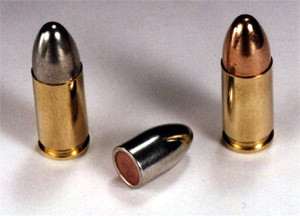
The 9×19mm Parabellum is a firearms cartridge that was designed by Georg Luger and introduced in 1902 by the German weapons manufacturer Deutsche Waffen und Munitionsfabriken (DWM) for their Luger semi-automatic pistol. For this reason, it is designated as the 9mm Luger by the Sporting Arms and Ammunition Manufacturers' Institute (SAAMI), and the 9 mm Luger by the Commission Internationale Permanente pour l'Epreuve des Armes à Feu Portatives (CIP). The name Parabellum is derived from the Latin: Si vis pacem, para bellum, which was the motto of DWM.

The .40 S&W is a rimless pistol cartridge developed jointly by major American firearms manufacturers Smith & Wesson and Winchester. The .40 S&W was developed from the ground up as a law enforcement cartridge designed to duplicate performance of the Federal Bureau of Investigation's (FBI) reduced-velocity 10mm Auto cartridge which could be retrofitted into medium-frame semi-automatic handguns. It uses 0.40-inch (10 mm) diameter bullets ranging in weight from 105 to 200 grains.

The slide is the part on a majority of semi-automatic pistols that moves during the operating cycle and generally houses the firing pin/striker and the extractor, and serves as the bolt. It is spring-loaded so that once it has moved to its rearmost position in the firing cycle, spring tension brings it back to the starting position chambering a fresh cartridge during the motion provided that the magazine is not empty.
The Beretta 92G-SD and 96G-SD Special Duty handguns are semi-automatic, locked-breech delayed recoil-operated, double/single-action pistols, fitted with the heavy, wide Brigadier slide, chambered for the 9×19mm Parabellum cartridge (92G-SD) and the .40 S&W cartridge (96G-SD), framed with the addition of the tactical equipment rail, designed and manufactured by Beretta.
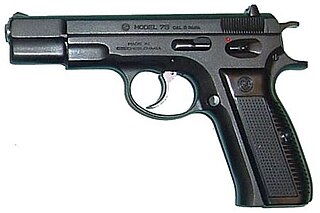
The CZ 75 is a semi-automatic pistol made by Czech firearm manufacturer ČZUB. First introduced in 1975, it is one of the original "wonder nines" featuring a staggered-column magazine, all-steel construction, and a hammer forged barrel. It is widely distributed throughout the world and is the most common handgun in the Czech Republic.

The CZ 52 is a semi-automatic pistol designed by two brothers, Jan and Jaroslav Kratochvíl, in the early 1950s for the Czechoslovak military. Around 200,000 vz. 52s were made by Česká Zbrojovka in Strakonice from 1952 to 1954. Before standardizing on the 7.62×25mm vz. 52, the Czechoslovak military used several domestic and foreign pistol models in three different calibers. After 30 years of military service, the vz. 52 was eventually replaced by the 9×18mm Makarov caliber vz. 82.

The WIST-94 is a semi-automatic pistol produced in Poland.

The K100 is a 9×19mm semi-automatic pistol designed and built by Grand Power s.r.o. in Slovenská Ľupča, Slovakia located approximately 11 kilometers east of Banská Bystrica, Slovakia which is the region's major city.

The Steyr M is a series of semi-automatic pistols developed by Steyr Mannlicher GmbH & Co KG of Austria for police services and the civilian shooting market. Design work on the new pistol began in the early 1990s and the final product known as the M9 was officially unveiled in the spring of 1999. The M40 version chambered in .40 S&W was developed before the M9, followed later by the M357 and two smaller variants of the M9 and M40 designated the S9 and S40 respectively. These pistols were developed primarily for concealed carry and have a shortened barrel, slide, smaller frame and a reduced magazine capacity. In 2013 the Steyr M (Medium) and S (Small) form factors were complemented by the L (Large) sized series and the C (Compact) sized series both available in 9×19mm Parabellum and .40 S&W chamberings as the L9-A1, L40-A1, C9-A1 and C40-A1.

A trigger is a mechanism that actuates the firing sequence of a firearm, airgun, crossbow or speargun. A trigger may also start other non-shooting mechanisms such as a trap, a switch or a quick release. A small amount of energy applied to the trigger causes the release of much more energy.

The Vzor 45, commonly known as CZ 45 is a compact blowback operated semi-automatic pistol chambered in .25 ACP. It was made in Czechoslovakia and later in the Czech Republic. Derived from the CZ-36 following World War II, the CZ-45 is currently manufactured by Česká zbrojovka Uherský Brod as the CZ-92.

The Tanfoglio Force, also known as Force 99, Force 2002, EAA Witness Polymer or EAA Witness P-Carry, is a modified clone of the Czech CZ-75/CZ-85 semi-automatic pistol. It is made in Gardone Val Trompia near Brescia, Italy by Fratelli Tanfoglio S.N.C..
The CZ 100 is a semi-automatic handgun, introduced in 1995 by Česká Zbrojovka. It was the first of CZs weapons to use synthetic materials. It has a sister model, CZ 110, which has a smaller magazine capacity.

The Ruger SR-Series is a line of semi-automatic pistols manufactured by Sturm, Ruger & Company. At 1.18 in (30.0 mm) thick through the grip, it is touted by Ruger as one of the thinnest double-stack pistols available. The SR-series has been marketed as a backup/concealment weapon for law enforcement as well as for civilian concealed carry. The Ruger SR9 chambered for the 9×19mm Parabellum cartridge was introduced in October 2007, and the slightly smaller SR9c came out in January 2010. The Ruger SR40 chambered for the .40 S&W cartridge came out in October 2010, and the compact SR40c in June 2011.

The Browning Hi-Power BDA is a 9mm semi-automatic pistol developed in the early 1980s at the Belgian Fabrique Nationale arms factory in Herstal. The pistol was conceived in 1983 to compete in the United States XM-9 Pistol Trials to select new sidearm chambered for the 9×19mm Parabellum cartridge that would equip all the branches of the United States armed forces. Ultimately, the winner of the bid was the Italian Beretta 92F. The Finnish Defence Forces accepted the weapon into service as their general service pistol under the designation 9.00 PIST 80 and 9.00 PIST 80-91. The pistol was marketed in Europe as the HP-DA.
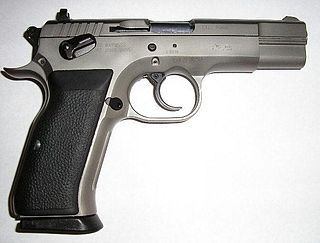
The Tanfoglio Combat or Standard, also known as T(A)95 or EAA Witness Steel, is a modified clone of the Czech CZ-75/CZ-85 pistol. It is made in Gardone Val Trompia near Brescia, Italy by Fratelli Tanfoglio S.N.C..

The CZ 2075 RAMI is a semi-automatic pistol made by Česká zbrojovka Uherský Brod (CZUB) in the Czech Republic. It features a staggered-column magazine, all-metal construction or optional Polyframe, and a hammer-forged floating barrel. The gun's name, RAMI, is derived from combining the first two letters of the designers' given names, Radek Hauerland and Milan Trkulja.
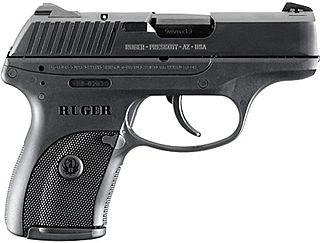
The Ruger LC9 is a 9mm caliber, recoil-operated, locked breech, Hammer fired, semi-automatic pistol announced by Sturm, Ruger & Co. at the 2011 SHOT Show. This pistol has safety features, including a loaded chamber indicator and magazine disconnect safety, that allow it to be sold in Massachusetts.

In 1977 Browning introduced four models of their Browning BDA handgun. These guns came in two frame sizes from two different makers. The large frame handgun was made in three calibers; 9x 19mm Parabellum, .38 Super, and .45 ACP. The guns were sold from 1977 until 1980. These guns were made in Germany by Sig-Sauer.

The Ruger American Pistol is a polymer-framed, semi-automatic pistol introduced by Ruger in December 2015. The pistol uses a pre-tensioned striker firing system, and is chambered in 9mm Luger and .45 ACP. The pistol uses a Browning-type locked-breech short recoil action, with a barrel cam system that is designed to reduce felt recoil. The serialized part of the pistol is a steel chassis, which is fit to a glass-filled nylon frame. The frame incorporates a Picatinny rail for mounting accessories.

CZ P-10 C is a compact semi-automatic striker-fired pistol made by Česká zbrojovka (CZ) in the Czech Republic. It was introduced in 2017 after development that began in 2014. The weapon is designed for self-defense and use in the armed forces.


























